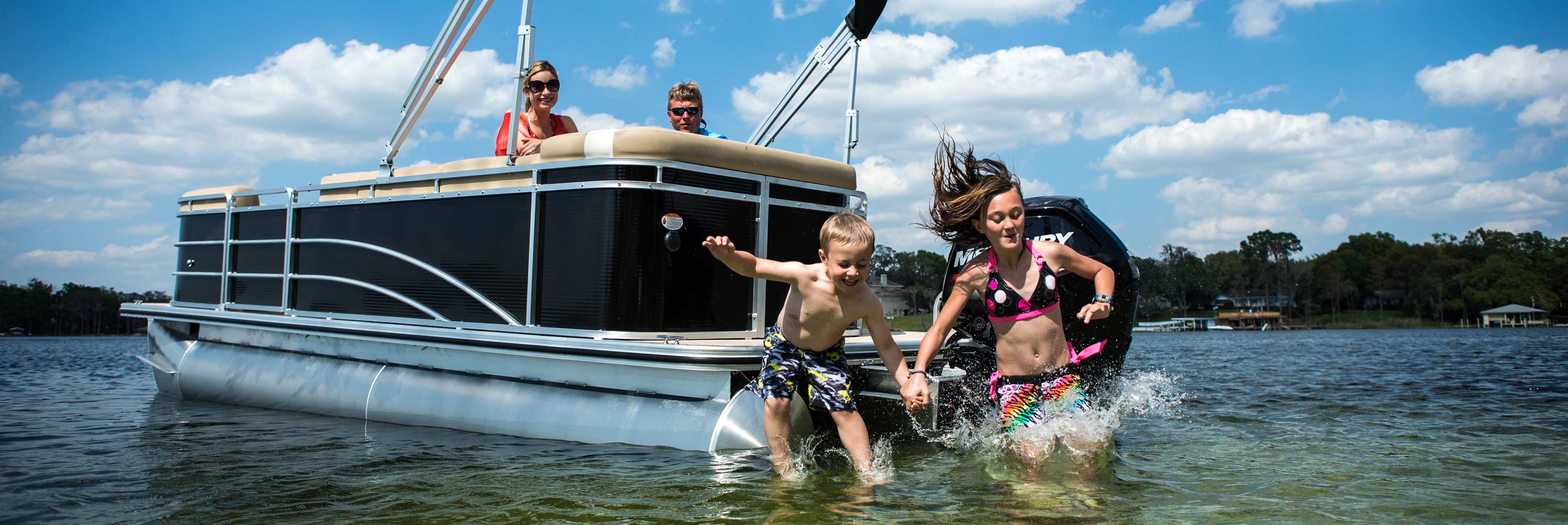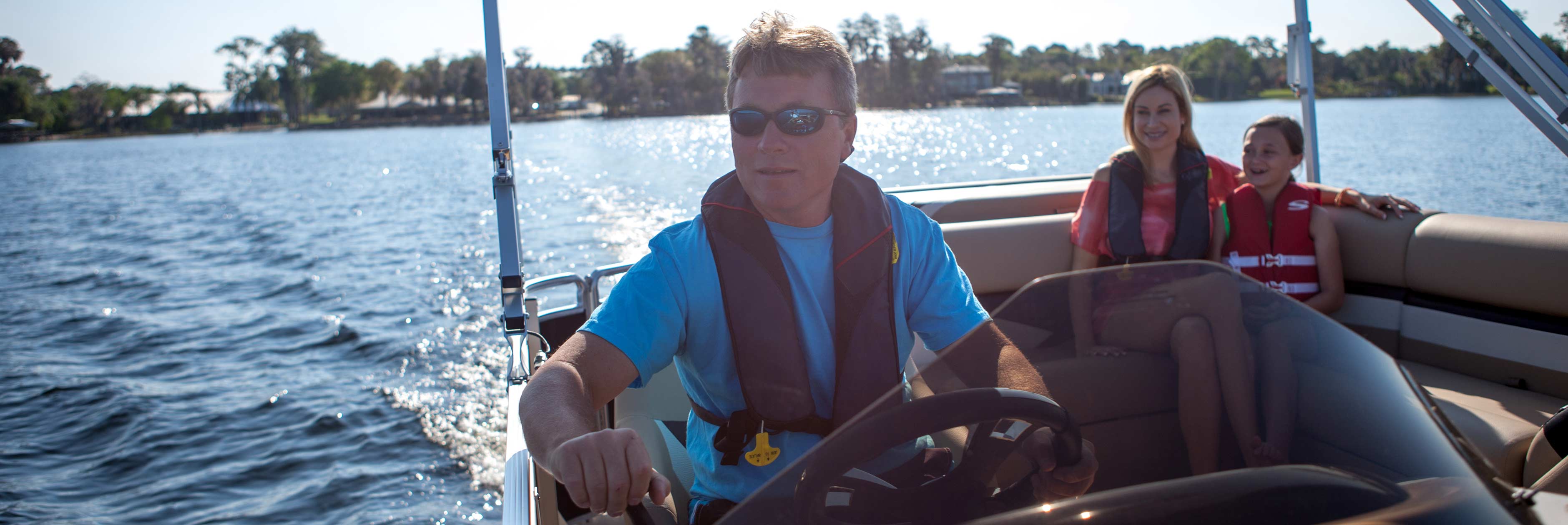The modern pontoon boat – a uniquely American concept – was invented in 1951 by Minnesota farmer Ambrose Weeres, who set a wooden platform atop two horizontal columns of steel barrels welded together end to end and powered the odd-looking rig with a small outboard engine. As the pontoon boat’s design grew more refined over the years, incorporating hydrodynamic metal “tubes,” motor mounts, and lounge seating, it developed into a popular segment of the boating market even though many boaters continued to regard “pontoons” as slow, utilitarian-looking vessels best suited for use as party barges on inland waters.
 Then, in the early 2000s, pontoons jumped in popularity due to advances in innovation and technology. Today’s pontoons can range up to 30 feet in length and feature eye-catching contemporary styling. They are available with a wide array of amenities, including luxury seating, rod holders and other fishing features, wet bars, grills, bimini tops, high-end audio, LED lighting, advanced control systems like Mercury SmartCraft Digital Throttle & Shift (DTS), full electronics packages, and even console cabins with heads – ranking them among the most versatile vessels on the water.
Then, in the early 2000s, pontoons jumped in popularity due to advances in innovation and technology. Today’s pontoons can range up to 30 feet in length and feature eye-catching contemporary styling. They are available with a wide array of amenities, including luxury seating, rod holders and other fishing features, wet bars, grills, bimini tops, high-end audio, LED lighting, advanced control systems like Mercury SmartCraft Digital Throttle & Shift (DTS), full electronics packages, and even console cabins with heads – ranking them among the most versatile vessels on the water.
Pontoon trailers also have gotten better and easier to use, and improvements in marinization techniques have made the boats more suitable for use in saltwater; these days, you can find a growing number of pontoons in coastal waters in addition to lakes and rivers.
Perhaps the most significant advancement in the evolution of the pontoon boat, however, was the addition of a third tube, creating the “tritoon” category. Although tritoons tend to be pricier than pontoons, they can accommodate more passengers and luxury amenities, as well as heavier, larger outboard engines capable of pulling water skiers and wakeboarders. You can even find tritoons with twin 450hp outboards that deliver speeds upwards of 70 mph!
Why choose a pontoon?
If you’re in the market for a boat that will let you pursue a wide variety of pastimes – from watersports to fishing to enjoying sunsets on the water with family and friends – you might consider a pontoon or tritoon. In addition to providing many of the features and capabilities as traditional fiberglass boats in a similar size range, they also offer unique advantages.
- Stability: With their weight dispersed evenly over two tubes, pontoon boats are inherently stable platforms that are less subject to rolling than mono-hull boats, particularly those with deep-V bottoms. The tritoon’s third hull adds even more stability in rough water.
 Accessibility: Pontoons typically have large, single-level decks accessed by boarding gates to port and starboard. Due to the way the deck rides above the water on the tubes, usually you can just open a gate and walk directly onboard from the dock without having to climb over a gunwale or navigate steps from a swim platform. This makes it easier to load groceries and gear and, more important, allow older guests or people with physical disabilities to board with comfort and confidence. Many pontoon and tritoon manufacturers will enlarge their boats’ boarding gates if needed to accommodate wheelchairs.
Accessibility: Pontoons typically have large, single-level decks accessed by boarding gates to port and starboard. Due to the way the deck rides above the water on the tubes, usually you can just open a gate and walk directly onboard from the dock without having to climb over a gunwale or navigate steps from a swim platform. This makes it easier to load groceries and gear and, more important, allow older guests or people with physical disabilities to board with comfort and confidence. Many pontoon and tritoon manufacturers will enlarge their boats’ boarding gates if needed to accommodate wheelchairs.- Durability. Since pontoons ride on metal tubes rather than fiberglass hulls, owners can beach them with less fear about damaging their boat. Outboard power also provides the flexibility of raising the shaft out of the way. Front and back gates with extendable ladders enable passengers to get down onto the sand or into the water quickly and easily to enjoy their day at the beach.
- Capacity. Unencumbered by engine compartments, cabins and other bulky deck structures, pontoon and tritoon boats typically seat more passengers than fiberglass runabouts. This continues to make them the number-one party platform on the water!
Over the past 70 years since their invention, pontoon boats have evolved from “boxy family station wagons” to sleek, spacious and versatile SUVs. They offer a flexible and fun alternative to fiberglass boats. Maybe they’re just what you’ve been looking for.

